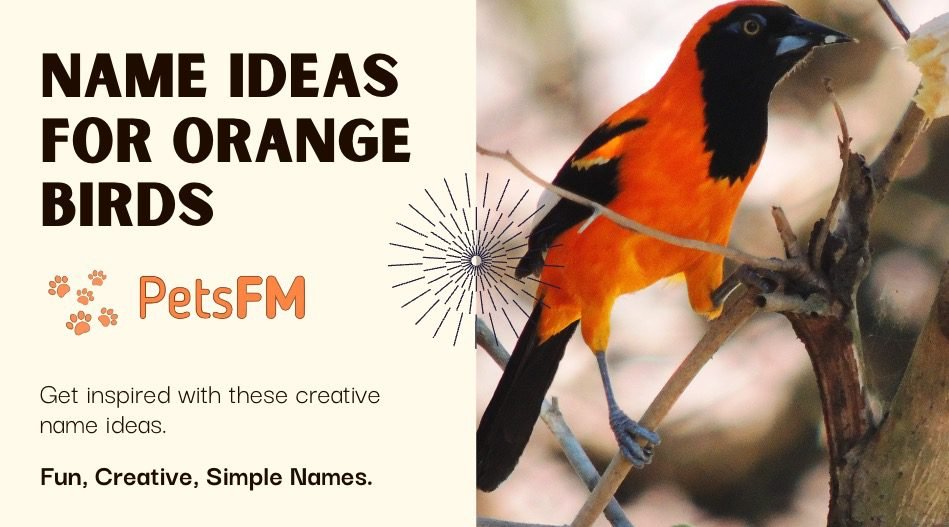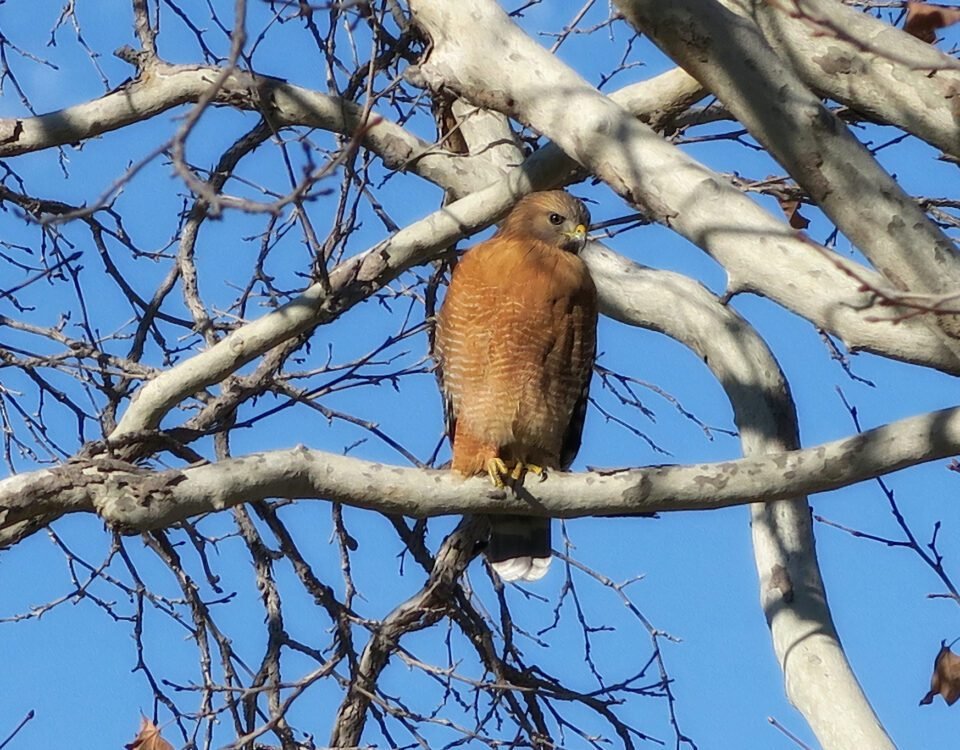


100+ Bird Names In Japanese With Translation in English
October 9, 2023


Why Do Birds Hit Windows? Is It Considered Spiritual?
October 9, 2023Birds have the most exceptional vision among all animals in the animal kingdom. Hawks, for instance, can pinpoint their prey from immense distances. At the same time, kingfishers and similar diving birds can adjust their trajectory to dive accurately onto baitfish from above water.
Are they able to see colors? Absolutely, and their vision of colors is even more complex than the spectrum humans observe. In reality, colors play a much more pivotal role in the survival of birds than we often realize. But what colors can birds see?
The vibrant colors of numerous birds indicate they can see each other’s complex feather patterns. Birds not only see the colors we see but also go beyond our visual spectrum! As tetrachromats, birds can see red, green, and blue, as well as ultraviolet light.
This article will discuss how birds can see colors and interact with the surrounding colors.
Similar Read: Can Birds See At Night? Unique Anatomy Of Bird’s Eye
What Colors Can Birds See?
Birds have a visual advantage over humans in seeing a broader range of colors. This is because of their fourth color receptor, making them tetrachromats. Hence, they can distinguish red, green, blue, and even ultraviolet light. In contrast, humans, being trichromats, are limited to red, green, and blue, missing out on the ultraviolet spectrum.


Tetrachromacy
Contrary to the myth that birds cannot see blue, they absolutely can. Given that blue is a dominant hue in bird feathers, they must be able to detect it. The unique structural nature of the color blue might be the source of this misconception.
While birds and mammals like us have visual limitations, the infrared spectrum remains unreachable to most. However, certain animals, such as pit vipers and vampire bats, can detect this light, allowing them to ‘see’ the warmth radiating from their prey.
How Birds See Colors?
Birds possess remarkable eyesight, often surpassing human capabilities in various aspects. Humans use three types of eye parts, called cones, to detect colors: red, green, and blue. On the other hand, birds have an additional cone that allows them to see ultraviolet (UV) light.


UV Light
Moreover, a special type of oil in bird’s eyes enhances their color vision. This oil sharpens the clarity of colors, enabling birds to notice very slight differences in shades that might be invisible to humans.
In addition, the density of cones and another component called rods is higher in birds’ eyes than ours. This increased number improves their visual sharpness and motion detection. Such keen vision aids birds in crucial activities like locating food and ensuring their safety.
Why Is UV Light Important For Birds To See?
The ability to perceive UV light is essential to how birds view the world. For many years, bird experts believed birds saw colors similar to humans. However, numerous bird behaviors remained mysterious until their UV light sensitivity was discovered. Here are some reasons why perceiving UV light is essential for birds:
- Food: Some fruits, like berries, have waxy surfaces reflecting UV light. This makes them pop out vividly against the green backdrop of leaves, enabling birds to spot them more effortlessly than humans can. Certain insects and flowers also reflect UV light, providing birds with an edge when searching for these food sources. This UV sensitivity can explain why birds might favor specific berries over others, even if both fruits offer the same nutritional value or ripen concurrently.
- Prey: Birds of prey, or raptors, leverage UV light to trace their targets. This is because the urine marks and trails left by small mammals like voles and mice glow under UV light. These trails help raptors pinpoint the exact locations of their prey, facilitating hunting even if the target itself isn’t directly visible.
- Feather Colors: To human eyes, some bird species might appear similar. However, under UV light, differences become apparent. For instance, while male blue tits might seem indistinguishable from females to us, they sport a distinct crown in the UV spectrum. This helps birds identify each other for mate selection, territory defense, and individual recognition.
- Eggs: Eggs laid by brood parasites might look nearly identical to the host bird’s eggs in visible light. Yet, under UV light, they often stand out. This UV distinction aids nesting birds in identifying and possibly rejecting eggs that aren’t theirs. Not every species will discard such foreign eggs, but for those that do, the UV pattern could play a role in their decision.
Similar Read: Can Birds Eat Walnuts? – Dietary Guidelines and Tips
What Colors Do Birds See The Best?
Along with a remarkable UV vision, birds can also distinguish the following hues and their mixtures:
- Purple
- Blue
- Green
- Yellow
- Orange
- Red


Different Colors
Birds are likely most responsive to the colors corresponding to their own species, their primary food sources, and other crucial visual cues, such as predator threats.
For instance, hummingbirds are drawn to red and orange, colors often found in flowers they pollinate. Similarly, orioles are fond of orange-hued foods, which interestingly aligns with their feather coloration.
Do Birds Avoid Any Color?
It’s often said that birds tend to avoid the color white. However, reactions to colors can vary widely across different bird species.
A fascinating study involving Gouldian finches from Australia revealed that these birds are repelled by the color red. This is because this species’ dominant and assertive male finches have red heads. Yet, this doesn’t apply to all bird species. For instance, hummingbirds are actually drawn to red flowers, which play a role in pollination.
Editor’s Pick: Can a Bird Pop A Hot Air Balloon? Should You Be Worried?
What Colors Attract The Birds To Bird Houses?
The most appealing colors for birdhouses tend to be the ones that blend in the most with nature. Subdued, earthy tones such as green, brown, and gray are most likely to attract wild birds.
Birdhouses offer an ideal haven for birds to nest and nurture their young. Interestingly, when birds explore for nesting spots, they aren’t necessarily attracted by color. Instead, they prioritize locations that offer protection from harsh weather and potential threats. Moreover, the design and dimensions of a birdhouse play a significant role in influencing which bird species might call it home.


Birdhouse
Which Color Attract Birds To Gardens And Backyards?
Green is likely the most inviting color for birds. Essentially, a lush garden with native plants offers them appealing spots for foraging, nesting, and resting.
Indigenous plants that yield a range of vibrant flowers and fruits will beautify your garden and be a magnet for your avian visitors.
Can All Birds See Colors?
Every bird species can see color, though the dimensions vary among species. For instance, owls might not detect colors as vividly as birds active during the day. This is because owl eyes are specially designed for low-light vision. For these nighttime predators, detecting motion is more crucial than identifying the color of their prey.
Are There Any Color-Blind Birds?
No, there are no bird species that are entirely color-blind. However, some species, like nocturnal birds, may have a more limited color vision compared to others due to adaptations for their specific environments.
Conclusion
Color perception plays a pivotal role in the vibrant world of avian species. From diurnal birds with their vast spectrum of color vision, including the ability to see ultraviolet light, to nocturnal species with a more tailored visual capacity suited to low-light environments, each bird is uniquely adapted to its surroundings.
While no bird species is entirely color blind, the conflict in their visual capabilities highlights these feathered creatures’ detailed diversity and adaptability in the vast nature.



